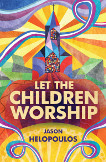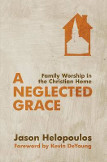
Three Act Night
On the night he was betrayed, Jesus set before his disciples three symbolic acts that pointed forward to what he would accomplish on the cross. First, there was the Passover/Lord's Supper; second, there was the foot washing in the Upper Room; and, third, there was the cup in the Garden. In all three of these acts, Jesus was helping his disciples to understand what he had come to do and to embrace his atoning death as the central work of the Kingdom of God.
The first of these symbolic acts was the Passover--that redemptive meal that reminded God's people of what He had done for them in delivering them from the bondage and idolatry in which they were held in Egypt. When God delivered Israel, he did so by means of the blood of the Lamb sprinkled on the door post of their houses. When the destroying angel passed over the houses and saw the blood, he passed over the home--thereby intimating that judgment was removed from that house. The members of the home were to eat the Passover Lamb in haste, after seasoning and roasting it. Not one of its bones was to be broken. The New Testament, in no uncertain terms, teaches us that Christ is "our passover" (1 Cor. 5:7). His blood is the blood by which we are spared from judgment. He taught his disciples in John 6, "Whoever feeds on me will live because of me." We are to waste no time in feeding on Christ. The Apostle John tells us that when Jesus hung on the cross, not one of his bones was broken (John 19:33-36). This occurred in order to prove that Christ had come to fulfill the type represented in the instructions about the Passover Lamb. After celebrating the Passover with his disciples, Jesus essentially moved the paschal lamb aside and placed himself on the Table. The institution of the Supper taught the disciples that Jesus had come to be the spiritual food for the souls of his people.
The second symbolic act was the foot washing in the Upper Room. Jonathan Edwards summarized the spiritual significance of this act when he wrote:
"Christ’s washing his disciples’ feet; which action, as it was exceeding wonderful in itself, so it manifestly was symbolical, and represented something else far more important and more wonderful, even that greatest and most wonderful of all things that ever came to pass, which was accomplished the next day in his last sufferings...[It] was fitly chosen by our Savior to represent that great abasement which he was to be the subject of in the form of a servant, in becoming obedient unto death, even that ignominious and accursed death of the cross, that he might cleanse the souls of his disciples from their guilt and spiritual pollution...Christ, in being obedient unto death, even the death of the cross, not only did the part of a servant unto God, but in some respects also of a servant unto us. And this is not the only place where his so abasing himself for our sakes is compared to the doing of the part of a servant to guests."1
Jesus acted out his abasement in the washing of the disciples feet. The language that John uses draws our minds to that of pre-existent glory, willing humiliation and subsequent exaltation. "Jesus rose and laid aside his garments (John 13:4)...he began to wash (v. 5)...when he had taken his garments, he sat down again (v. 12)." Jesus would, of course, teach the disciples that they should do likewise--signifying the spiritual washing of the word with which they should labor to wash his people after his ascension. However, the foot washing was properly an act signifying the work of Jesus on the cross.
We find the third symbol in Jesus' interaction with his Father in the Garden. The Father gave the Son a preview of the sufferings that he would endure on the cross, when he set before him "the cup." Eric Alexander explains the nature of "the cup" when he writes:
"Jesus knew that the essence of the cup was the judgment of a holy God against Him. The cup that He would drink was full of the wrath of God. As the apostle says, “The wrath of God is revealed from heaven against all unrighteousness and ungodliness of men who suppress the truth in unrighteousness” (Rom. 1:18). Although the wrath of God is not a popular doctrine in the present day, it is no less true because of its unpopularity. The cross of Christ is the place where men start to discover the stark facts about the wrath of God. The vials of God’s wrath were poured into the cup that Christ saw being brought to His lips in Gethsemane. This is what made the preview of the cross so appalling. The cry that came from the cross in that supreme hour explains the horror of the judgment. When the Father, looking down on all the foul mass of sin cast on the holy soul of His Son, turned Himself away from it all, a cry came from Jesus: “Eloi, Eloi, lama sabachthani” (“My God, My God, why have You forsaken Me?” Matt. 27:46)...It was a cup of judgment."2
Jesus gave these three symbolic acts to prepare his disciples and to help believers better grasp the nature of what he had come into the world to do. It would be all too easy, on account of our sinfulness, to have misplaced notions about the nature of the Gospel. Jesus' three acts on the night of his betrayal helps us seal in our thoughts that which is of supreme importance.
1. An excerpt from Edwards' sermon, "Christ, the Example of Ministers."
2. An excerpt from Eric Alexander's lecture, "The Cup of Bitterness, and the Cup of Blessing."
Christward Collective is a conversation of the Alliance of Confessing Evangelicals. It is supported only by its readers and gracious Christians like you. Please prayerfully consider supporting Christward Collective and the mission of the Alliance.



















 © Alliance of Confessing Evangelicals
© Alliance of Confessing Evangelicals


